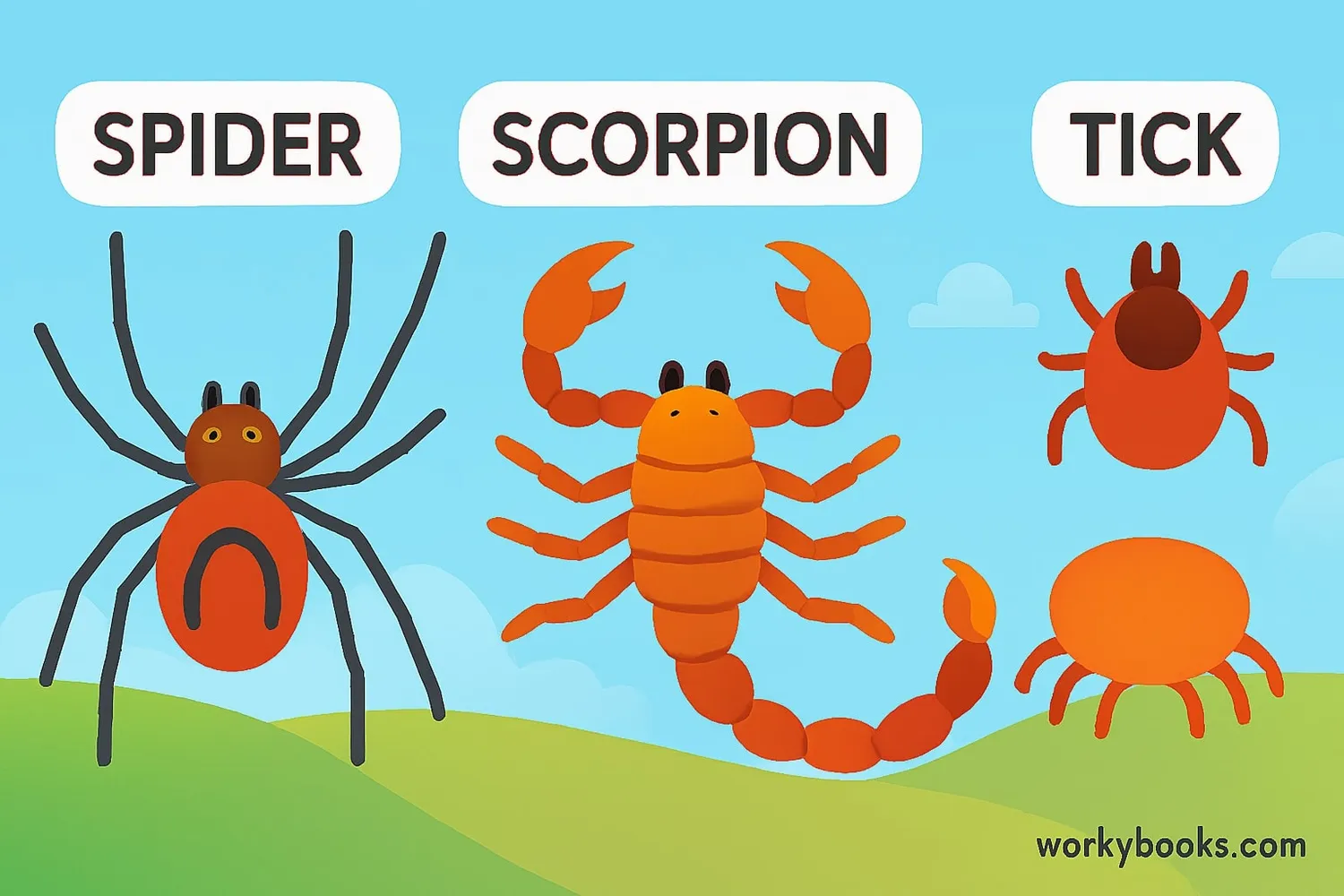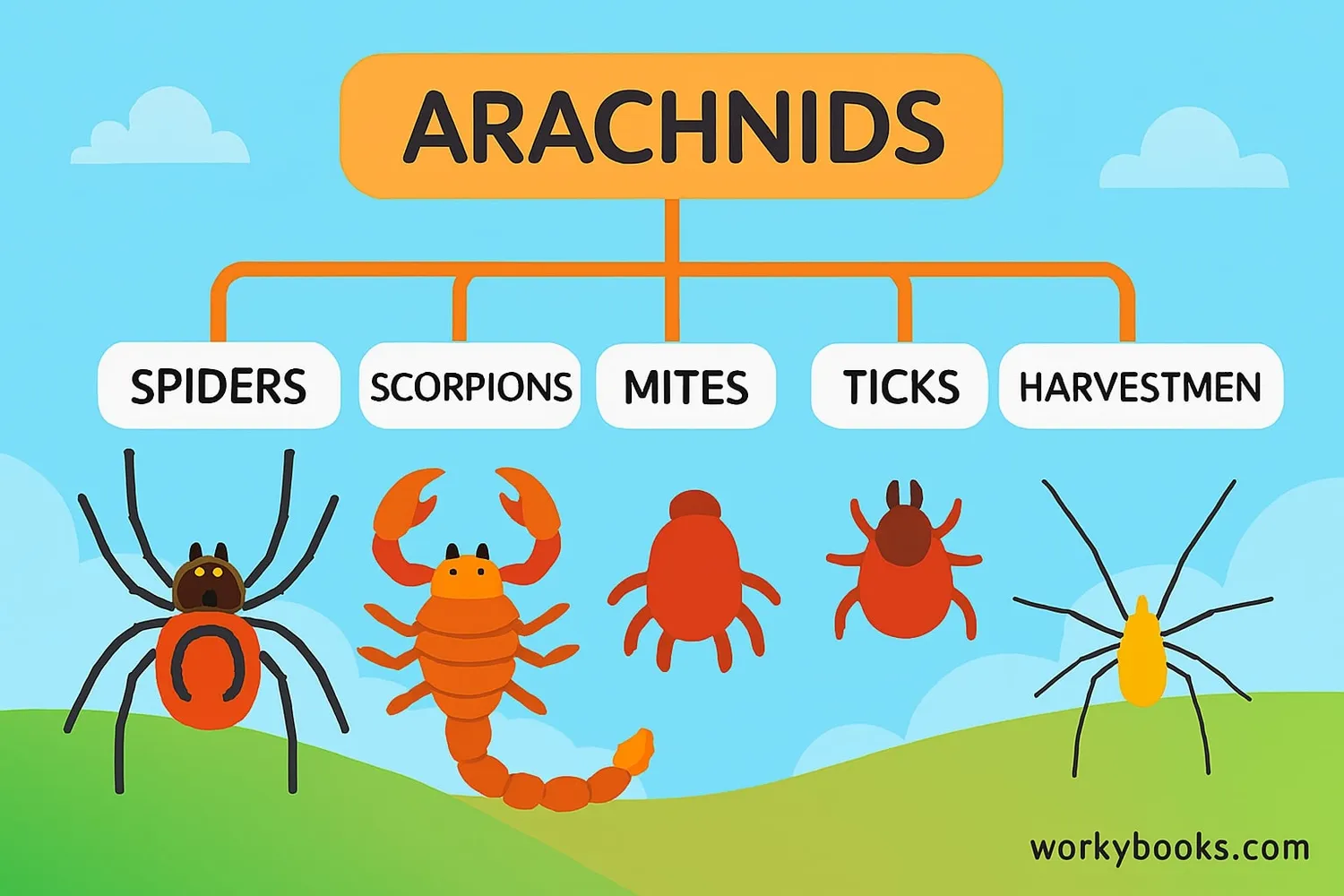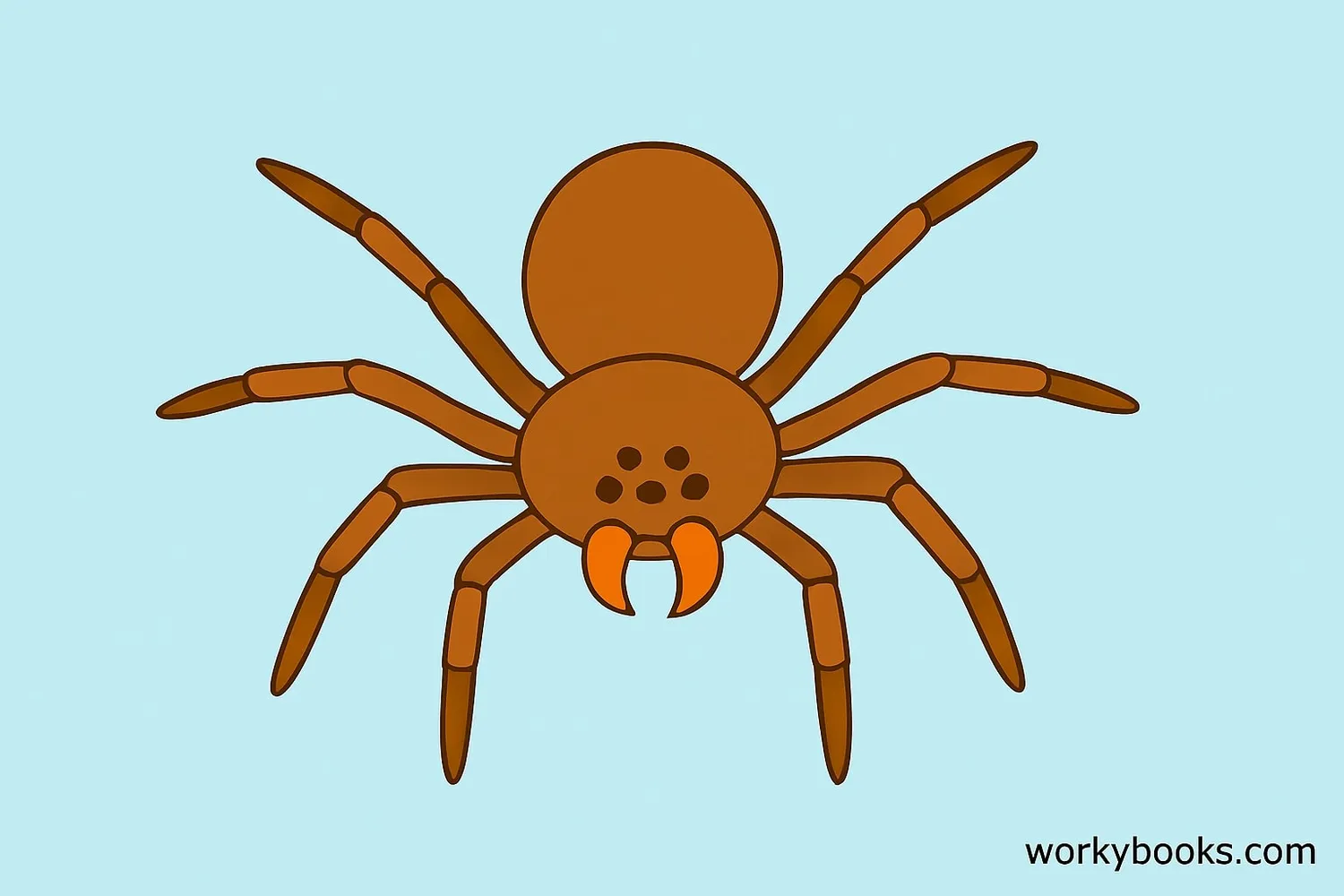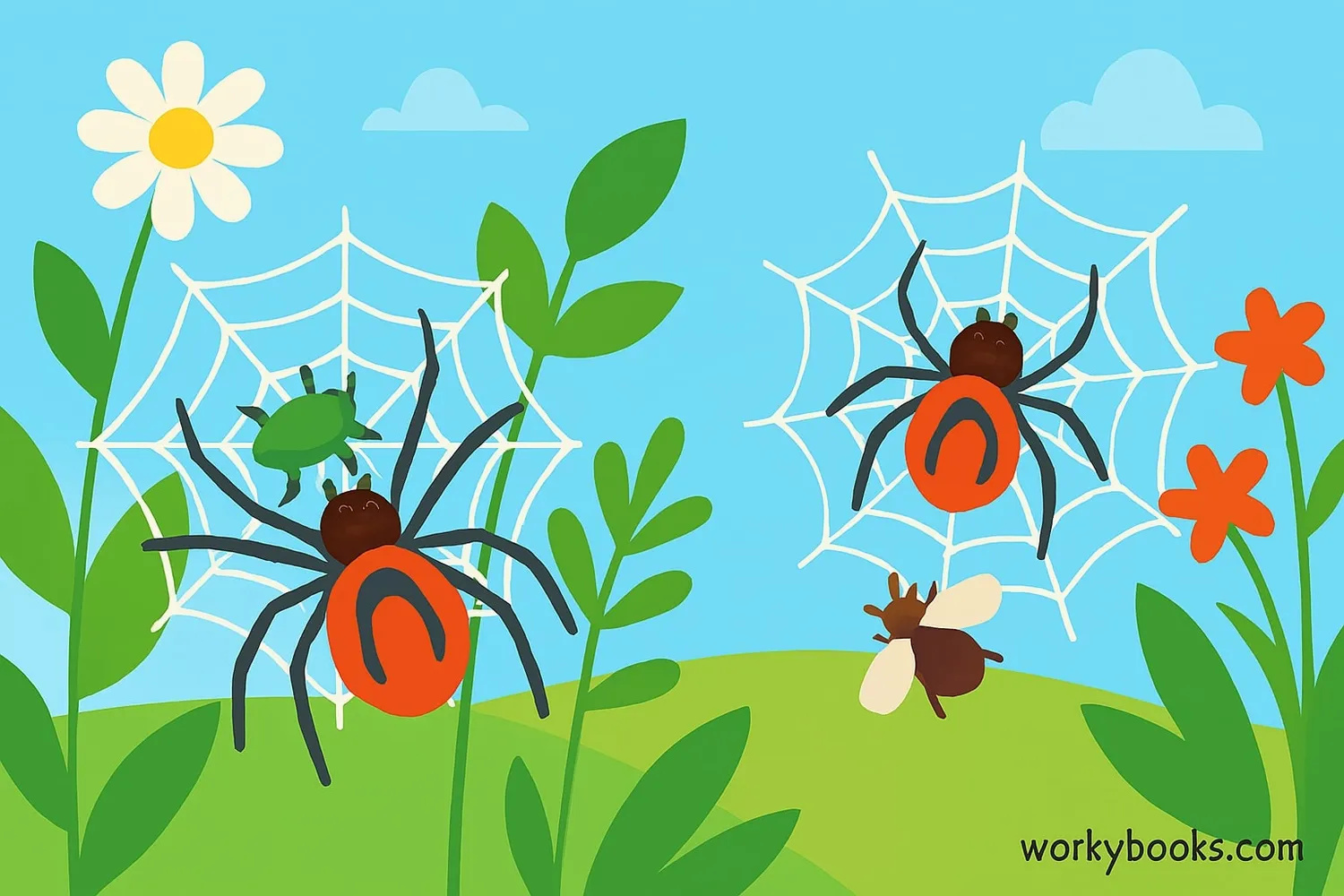Arachnids - Definition, Examples, Quiz, FAQ, Trivia
Discover the fascinating world of spiders, scorpions, and their relatives
What are Arachnids?

Arachnids are a group of invertebrate animals with eight legs. They belong to the arthropod family, which also includes insects, crustaceans, and others. Unlike insects that have six legs, arachnids always have eight legs!
Scientists have identified over 100,000 species of arachnids, including spiders, scorpions, ticks, mites, and harvestmen. These creatures are found all over the world in almost every habitat, from deserts to rainforests, and even in your backyard!
Did You Know?
The study of arachnids is called arachnology, and scientists who study them are called arachnologists.
Types of Arachnids

While many people think of spiders when they hear "arachnid," this group actually includes many different types of creatures:
Spiders
Over 45,000 known species that produce silk and most have venom
Scorpions
About 2,000 species with pincers and a venomous stinger on their tail
Mites & Ticks
Thousands of species, some are parasites while others help decompose matter
Harvestmen
Often called "daddy longlegs" with oval bodies and very long, thin legs
Other Arachnids
Includes whip scorpions, pseudoscorpions, and sun spiders
Not All Are Dangerous!
While some arachnids like black widow spiders or bark scorpions have venom that can be dangerous to humans, most arachnids are harmless and many are actually helpful to people!
Arachnid Anatomy

Arachnids have unique body structures that make them different from insects:
Two Main Body Parts
Arachnids have a fused head and thorax (cephalothorax) and an abdomen
Eight Legs
All arachnids have four pairs of legs (eight total)
Simple Eyes
Most have simple eyes (ocelli) instead of compound eyes like insects
Pedipalps
Special appendages near the mouth used for feeding and sensing
No Wings or Antennae
Arachnids never have wings or antennae like insects do
Spiders have special adaptations like spinnerets for producing silk, and scorpions have a unique curved tail with a venomous stinger at the end. Each type of arachnid has specialized body parts that help it survive in its environment.
Importance of Arachnids

Arachnids play crucial roles in ecosystems and are more helpful than many people realize:
Pest Control
Spiders eat enormous numbers of insects, including many that damage crops
Decomposers
Mites help break down organic matter, returning nutrients to the soil
Medical Research
Scorpion and spider venoms are studied for potential medical applications
Beyond their ecological roles, arachnids have inspired:
• Engineering designs based on spider silk strength
• Robotics inspired by arachnid movement
• New medicines derived from arachnid venoms
• Cultural stories and artistic inspiration across human societies
While some arachnids can be dangerous, most are harmless and provide valuable services to ecosystems and humans.
Arachnid Quiz
Test your arachnid knowledge with this quiz! Answer all 5 questions to see how much you've learned.
Frequently Asked Questions
Here are answers to some common questions about arachnids:
Fascinating Arachnid Facts
Discover some amazing facts about arachnids!
Super Strong Silk
Spider silk is pound-for-pound stronger than steel! Some spider silks are five times stronger than steel of the same diameter. Scientists are still trying to recreate this amazing material in laboratories.
Glowing Scorpions
Scorpions glow under ultraviolet light! Their exoskeletons contain fluorescent chemicals that make them glow a bright blue-green color under UV light. Scientists aren't completely sure why they have this ability.
Eating Habits
Spiders can't eat solid food! They inject digestive enzymes into their prey, which turns the insect's insides into a liquid soup that the spider then drinks. Yuck!
Ancient Giants
Ancient arachnids were much larger than today's species! About 300 million years ago, there were scorpions that grew over 70 cm (2.3 feet) long - about the size of a large dog!


